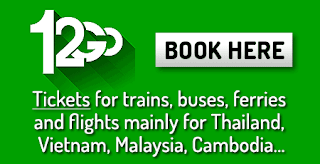If you’re thinking about planning a trip to Cambodia soon, reconsider, unless you’re willing to put down US$3,000, a fortune for a backpacker in Southeast Asia. The country wants foreigners to make the deposit at a local bank upon entering to make sure any potential medical or quarantine costs can be met. And that’s just the start.
Even if you have the money, it’s still tricky to get in. Travelers need to have a medical insurance valued over US$50,000 and a health certificate deeming them free of the coronavirus, issued 72 hours before entering the country. Then, they start deducting from the deposit.
Local media say testing may need to be done before a traveler can enter which would be US$100 for a swab test, US$30 for overnight accommodation while results sent to the lab, $30 for food and extra expenses for transportation. This would be taken out of the deposit made at the bank.
Once the travellers has gone through all that rigmarole, then they must self isolate for 14 days at their hotel, reporting to medical officers each day. Another swab test would be done on the 13th day of isolation. In another scenario, where a passenger on the flight tests positive for the coronavirus, then everyone on the flight would need to go into quarantine, with costs involved taken out of the bank deposit. Worse case, those who get sick need to pay all costs involved.
Even death has costs. US$1,500 would used for cremation and funeral costs.
Have a great time in Cambodia!
SOURCE: TTR Weekly
Even if you have the money, it’s still tricky to get in. Travelers need to have a medical insurance valued over US$50,000 and a health certificate deeming them free of the coronavirus, issued 72 hours before entering the country. Then, they start deducting from the deposit.
Local media say testing may need to be done before a traveler can enter which would be US$100 for a swab test, US$30 for overnight accommodation while results sent to the lab, $30 for food and extra expenses for transportation. This would be taken out of the deposit made at the bank.
Once the travellers has gone through all that rigmarole, then they must self isolate for 14 days at their hotel, reporting to medical officers each day. Another swab test would be done on the 13th day of isolation. In another scenario, where a passenger on the flight tests positive for the coronavirus, then everyone on the flight would need to go into quarantine, with costs involved taken out of the bank deposit. Worse case, those who get sick need to pay all costs involved.
Even death has costs. US$1,500 would used for cremation and funeral costs.
Have a great time in Cambodia!
SOURCE: TTR Weekly











































